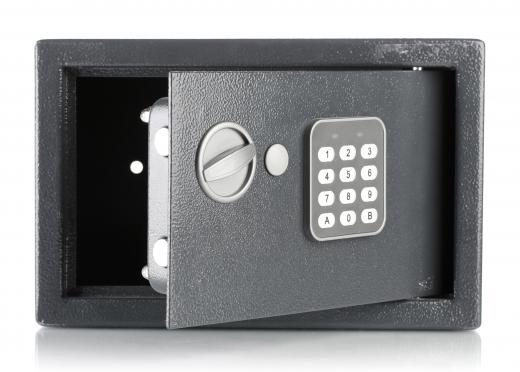A locking solenoid is a conventional solenoid — a wire coil that is magnetized when paired with an electrical current — that is made to lock a door or device. The coil is small enough to fit into a lock, where it keeps the locking mechanism from moving unless an electromagnetic force is used to gain access. When the door is locked, no power is used, so the solenoid has a long duty cycle and tends to run off batteries. While most are very small, there are some large ones made for heavy-duty equipment and safety devices. The most common places a locking solenoid is used are in doors, vending machines, and turnstiles.
When a door or device locks via a solenoid, it is using basic electromagnetic forces to control the lock. The solenoid fits in the locking mechanism and, when locked, will expand so the device cannot be unlocked by sheer force. An electromagnetic force, such as a keycard, is needed to tell the solenoid to move, allowing the device to unlock and open.

While the locking solenoid will keep the device locked, it is not technically on when in locking mode, because no power is being used. The solenoid only needs power when unlocking and, because most devices are consistently locked, very little energy is ever required by the solenoid. For this reason, most solenoids run on battery power, and the battery rarely needs to be changed.
The majority of these solenoids are made to be small, because they fit in small devices, but there are some that are large and exhibit powerful electromagnetic forces. Heavy-duty solenoids are used in construction equipment, such as forklifts, to lock the mast when the machine is off or not operating. Unlike smaller solenoids that exhibit the force of about 45 Newtons, these larger solenoids use about 1,000 Newtons to lock the equipment in place.
The most common devices that use a locking solenoid are usually small, around the size of a human adult or less, and do not need much locking force. Hotels, offices and other secure areas use them to lock doors because picking a solenoid lock is very difficult. Instead of the easily broken padlocks long used on vending machines, solenoid locks are modern alternatives. Turnstiles at parks, subways, and entertainment events also use solenoids to stop people unless they are authorized to pass through.
